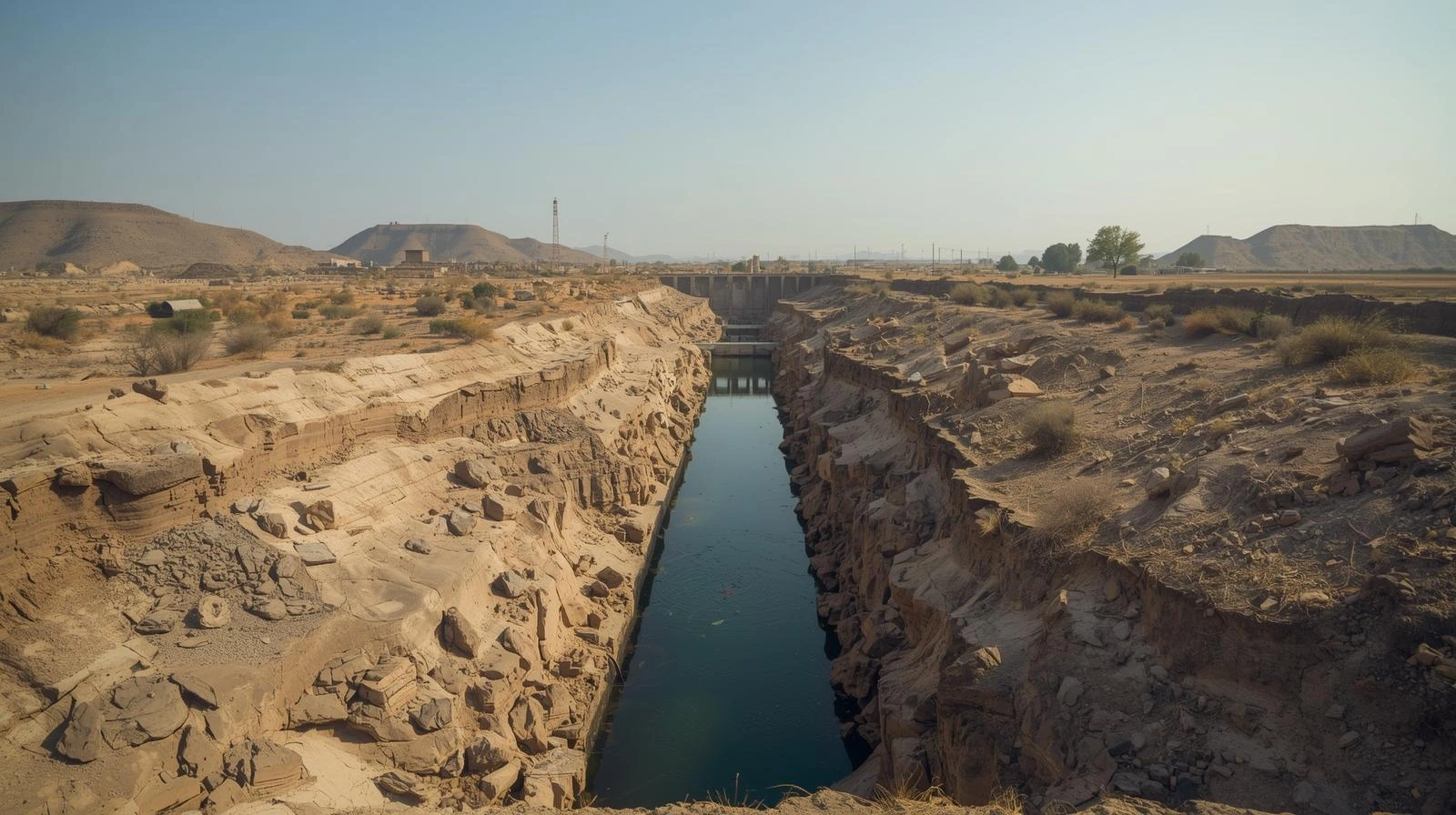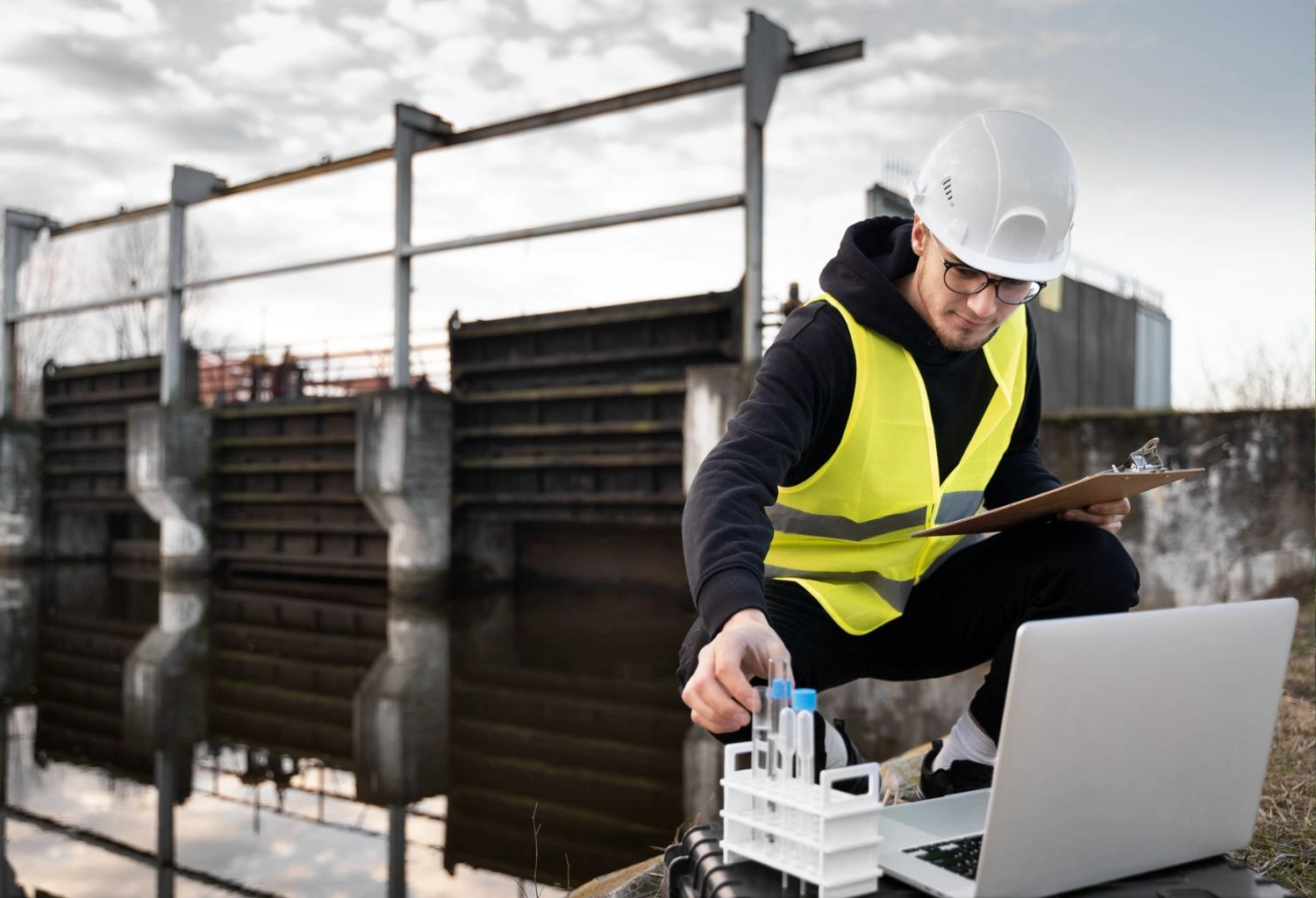Can Pakistan’s industrial sector contribute to solving the country’s water scarcity crisis?
With rapid urbanization and an expanding population, Pakistan is facing one of its most pressing environmental challenges: water scarcity. In a country where over 100 million people are already living under water stress, industries are a major source of wastewater discharge that contributes heavily to water pollution. This situation is exacerbated by inefficient water treatment systems, causing significant harm to both the environment and the economy. But what if there was a solution that could turn wastewater into a resource, helping industries comply with environmental regulations while mitigating the water scarcity problem?
The answer lies in Zero Liquid Discharge (ZLD) technology. This advanced water treatment process offers a promising way to recycle and purify industrial wastewater, ensuring minimal water wastage. In this article, we’ll explore how ZLD plants can play a crucial role in alleviating water scarcity in Pakistan while benefiting industrial operations.
What is Zero Liquid Discharge (ZLD) and How Does it Work?
Zero Liquid Discharge (ZLD) is a water treatment process that aims to recover and reuse all the water used in industrial operations, leaving no liquid waste behind. The primary goal of ZLD systems is to eliminate wastewater discharge into the environment by treating and recycling nearly 100% of the water.
Key Components of ZLD Systems:
- Pre-treatment: The wastewater undergoes physical and chemical treatments to remove large particles and pollutants.
- Reverse Osmosis (RO): This process purifies the water by removing dissolved salts and impurities, making the water reusable.
- Evaporation: In this stage, the remaining contaminants are concentrated into solid waste, which is then disposed of safely.
- Crystallization: For industries with highly concentrated waste, crystallization ensures that all liquids are converted into solids, leaving no discharge.
This process not only saves water but also helps industries comply with environmental regulations by minimizing their carbon footprint and reducing the risk of contamination.
How Can ZLD Plants Address Pakistan’s Water Scarcity Issue?
Pakistan’s water crisis is exacerbated by both the over-extraction of groundwater and the inefficient use of available water resources in agriculture and industry. The industrial sector alone contributes significantly to water pollution, with untreated wastewater being released into rivers and streams, reducing the available clean water supply.
Key Ways ZLD Helps:
- Water Conservation: ZLD technology ensures that water used in industrial processes is recycled and reused, significantly reducing the demand for fresh water.
- Pollution Control: By removing contaminants from wastewater, ZLD plants reduce the burden on local water bodies and prevent contamination.
- Compliance with Regulations: ZLD systems help industries meet increasingly stringent environmental regulations, such as Pakistan’s National Environmental Quality Standards (NEQS), ensuring legal compliance while promoting sustainability.
Industrial Water Treatment Chemicals
Real-World Examples of ZLD Implementation in Pakistan
1. Textile Industry in Faisalabad
The textile industry in Faisalabad, one of Pakistan’s largest industrial hubs, is a significant consumer of water. In recent years, several textile mills in the region have adopted ZLD systems to treat their effluent. By implementing ZLD technology, these mills have reduced their reliance on fresh water sources while ensuring that wastewater is treated and recycled effectively. This not only helps preserve the region’s precious water resources but also enables these businesses to comply with environmental standards.
2. Chemical Plants in Karachi
In Karachi, chemical manufacturing plants have faced growing pressure to reduce water consumption and minimize their environmental impact. Several companies have turned to ZLD technology to treat their effluents and recycle water back into their operations. These initiatives have helped the plants conserve water while also reducing their discharge of harmful chemicals into the environment.
3. Power Plants in Punjab
The power generation sector in Punjab has also embraced ZLD systems as a sustainable solution for wastewater treatment. By implementing ZLD plants, power plants have been able to reclaim water used in cooling systems and prevent harmful discharges into rivers, which helps mitigate the effects of water pollution on local communities.
The Economic and Environmental Benefits of ZLD Systems
ZLD systems offer numerous advantages that can benefit both industries and the environment in Pakistan:
1. Water Cost Reduction
By recycling and reusing water, industries can significantly reduce their dependence on external water sources, leading to cost savings. The initial investment in ZLD technology may be high, but the long-term savings in water procurement and wastewater treatment costs can be substantial.
2. Environmental Impact
By preventing wastewater discharge, ZLD systems contribute to cleaner water bodies and a healthier environment. This helps combat the growing issue of water pollution and ensures that water resources are available for future generations.
3. Sustainability and Brand Reputation
As global industries move towards sustainability, adopting ZLD technology positions businesses as environmentally responsible entities. This enhances their brand reputation and can attract eco-conscious customers, partners, and investors.
Overcoming Challenges in ZLD Implementation in Pakistan
While the benefits of ZLD technology are clear, the implementation of such systems in Pakistan is not without challenges. These include:
1. High Initial Investment
The upfront costs of installing ZLD plants can be prohibitive for many businesses. However, with the potential for long-term cost savings, the investment can often be justified.
2. Technical Expertise and Maintenance
ZLD systems require specialized knowledge for installation, operation, and maintenance. In Pakistan, there is a lack of trained personnel who can manage these advanced systems. To overcome this, businesses must invest in training programs and hire skilled engineers.
3. Energy Consumption
The ZLD process can be energy-intensive, especially in the evaporation and crystallization stages. However, integrating renewable energy sources such as solar or wind power can help reduce the carbon footprint and energy costs.
Key Takeaways: How to Get Started with ZLD Technology
- Assess Water Usage: Begin by evaluating your industrial operations to understand how much water is being used and where it can be saved.
- Consult Experts: Work with water treatment specialists to design a ZLD system tailored to your specific needs.
- Invest in Technology: Ensure that you invest in the right technology that can handle your wastewater’s chemical composition.
- Explore Financing Options: Look into government incentives, loans, or grants that may be available to support the adoption of green technologies like ZLD.
Conclusion
Zero Liquid Discharge technology offers a practical and effective solution to Pakistan’s growing water scarcity crisis. By recycling and reusing wastewater, ZLD systems not only help industries reduce their environmental footprint but also contribute to the sustainable use of water resources. As Pakistan continues to grapple with water shortages, embracing ZLD technology could be a game-changer for both industrial operations and the country’s long-term environmental health.
Take Action Today!
Is your business ready to make the shift to ZLD? Start by assessing your water usage, consulting with experts, and exploring the available solutions. The future of Pakistan’s water sustainability lies in the hands of industries that are willing to take responsibility for their water consumption and waste.
FAQ Section
1. What is Zero Liquid Discharge (ZLD)?
ZLD is a wastewater treatment process that recycles 100% of water used in industrial operations, leaving no liquid discharge.
2. How does ZLD technology help with water scarcity in Pakistan?
By recycling industrial wastewater, ZLD reduces the need for fresh water, helping to conserve precious water resources.
3. What industries in Pakistan can benefit from ZLD systems?
Industries like textiles, chemicals, power generation, and food processing can benefit from implementing ZLD technology.
4. Is ZLD technology cost-effective for small businesses?
While the initial investment may be high, the long-term savings in water and wastewater treatment costs can make ZLD a cost-effective solution for many businesses.
5. What are the environmental benefits of ZLD?
ZLD helps reduce water pollution, conserve water resources, and reduce industrial discharge into local water bodies.
6. How can businesses in Pakistan implement ZLD technology?
Businesses should assess their water usage, consult with experts, and invest in the necessary infrastructure for ZLD systems.
7. What challenges do businesses face when adopting ZLD in Pakistan?
Challenges include high initial costs, lack of technical expertise, and high energy consumption.


